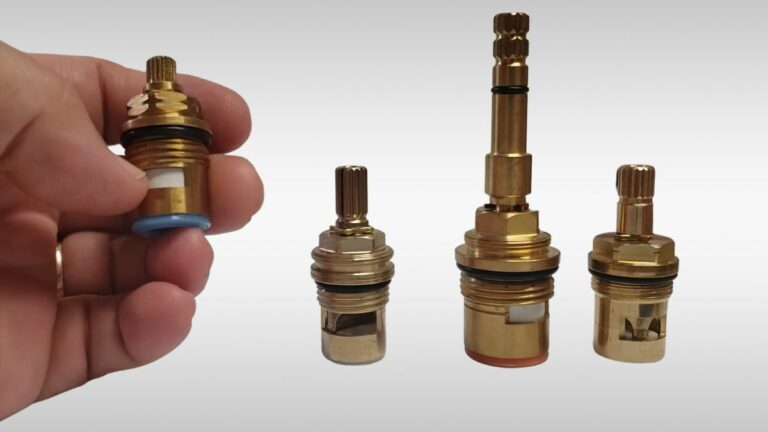How To Fix Bathtub Drain
Dealing with a slow or clogged bathtub drain can be frustrating, especially when you’re not sure where to start. Whether your drain is draining too slowly, making odd noises, or leaking, knowing how to fix it yourself can save you time and money. In this guide, you’ll learn the common problems bathtub drains face, the necessary tools, and step-by-step instructions to get your drain working smoothly again. By the end, you’ll have the confidence to tackle most bathtub drain issues and keep everything flowing as it should.
Common Bathtub Drain Problems
Bathtub drains can develop several issues over time. The most common problems include slow draining water, complete clogs, leaks around the drain, foul odors, and noisy drainage. Slow drainage is frequently caused by soap scum, hair, and other debris building up in the drainpipe. Leaks often result from worn-out gaskets or seals, while odors usually indicate trapped organic matter or mold growth. Recognizing these symptoms early can help you address the problem before it worsens.
Tools And Materials Needed For Repair
Before you begin fixing your bathtub drain, gather the right tools and materials. Here’s what you’ll typically need:
- Screwdrivers (both flathead and Phillips)
- Pliers or adjustable wrench
- Drain snake or auger
- Bucket
- Rubber gloves
- Replacement parts (such as gaskets, washers, or a new drain assembly)
- Cleaning brush or old toothbrush
- Vinegar and baking soda (for natural cleaning)
- Plumber’s putty or silicone sealant
Having these on hand ensures a smoother repair process without unnecessary interruptions.
How To Remove The Bathtub Drain Stopper
Removing the drain stopper is the first step to accessing the drainpipe for cleaning or repair. The removal process depends on the type of stopper you have:
Lift-and-Turn Stopper
- Unscrew the small knob on top to remove the stopper.
- Pull the stopper out of the drain.
Push-and-Pull Stopper
- Pull the stopper up to the open position.
- Locate the small set screw on the side of the stopper under the lip.
- Use a screwdriver or hex wrench to loosen the set screw.
- Pull the stopper out.
Trip Lever Stopper
- Remove the overflow plate on the bathtub wall using a screwdriver.
- Reach inside and manually lift the stopper.
Once the stopper is removed, you can clean or unclog the drain more effectively.
Cleaning And Unclogging The Drain
A clogged drain is often caused by hair and soap buildup. To clear it:
- Remove any visible debris near the drain opening.
- Use a drain snake or auger to reach further inside. Insert it slowly and twist to catch clogs.
- Pull out the debris carefully.
- For minor clogs, try a mixture of baking soda followed by vinegar. Let it fizz for 15 minutes, then flush with hot water.
- Avoid chemical drain cleaners as they can damage pipes over time.
Repeat the process if necessary. If water still drains slowly, there may be a deeper blockage requiring professional help.
Repairing Or Replacing The Drain Assembly
If your drain is leaking or damaged, you might need to repair or replace the drain assembly. Here’s what to do:
- Remove the drain flange using pliers or a drain removal tool by turning it counterclockwise.
- Clean the drain opening thoroughly.
- Apply plumber’s putty around a new drain flange.
- Insert the flange and tighten it from underneath the tub with a lock nut.
- Replace worn-out washers and gaskets while reassembling.
- Check for leaks by running water.
Make sure the fittings are snug but avoid overtightening, which can crack the tub or damage parts.
Preventive Maintenance Tips For Bathtub Drains
Keeping your bathtub drain in good shape requires regular maintenance. Here are some tips:
- Use a drain screen to catch hair and prevent buildup.
- Flush the drain monthly with hot water, baking soda, and vinegar.
- Avoid pouring grease or oily substances down the drain.
- Clean the stopper regularly to remove soap scum and grime.
- Check for leaks or signs of corrosion periodically.
These simple steps can extend the life of your drain and reduce the frequency of repairs.
When To Call A Professional Plumber
While many bathtub drain issues you can fix yourself, some situations call for a pro:
- Persistent clogs that don’t clear with a snake.
- Leaks within walls or under the tub causing water damage.
- Broken or corroded plumbing pipes.
- Complex drain assembly replacements requiring specialized tools.
If you notice water pooling, mold growth, or structural damage around your tub, it’s best to consult a licensed plumber promptly to avoid costly repairs.
Conclusion
Fixing your bathtub drain doesn’t have to be intimidating. With the right tools, a bit of patience, and some know-how, you can tackle common drain problems like clogs, leaks, and slow drainage confidently. Regular maintenance will keep your plumbing functioning smoothly and help you avoid inconvenient backups. Remember to recognize when a problem is beyond a quick DIY fix and call in a professional plumber to protect your home. Taking control of your bathtub drain issues empowers you to maintain a clean, efficient bathroom with ease.

